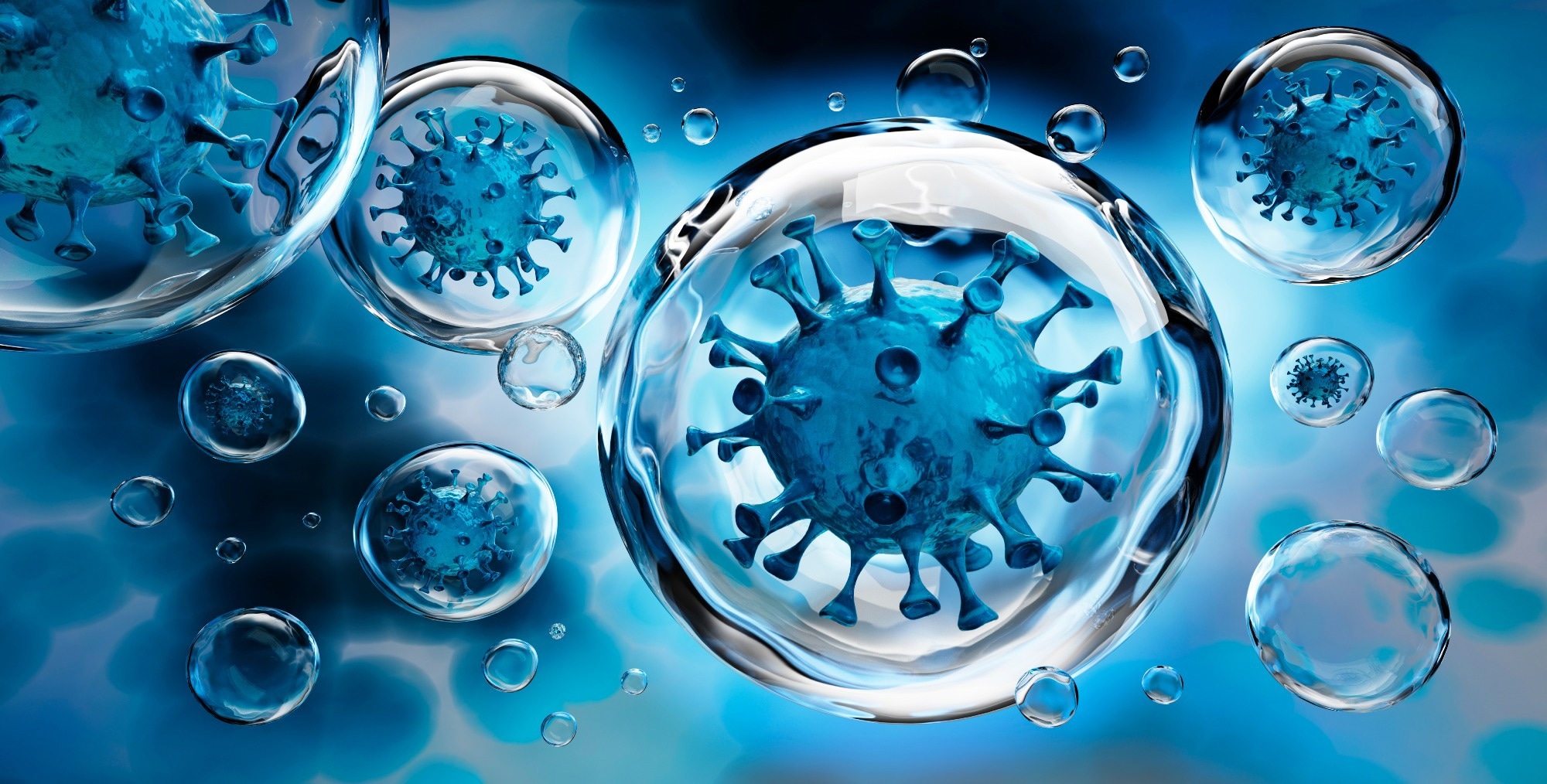The recognition of aerosols as the primary transmission route for the severe acute respiratory syndrome coronavirus 2 (SARS-CoV-2), the virus responsible for the coronavirus disease 2019 (COVID-19), has led to the implementation of effective prevention measures, including the adoption of masks, air purifiers, social distancing, and ventilation.
 Study: Differences in airborne stability of SARS-CoV-2 variants of concern is impacted by alkalinity of surrogates of respiratory aerosol. Image Credit: peterschreiber.media / Shutterstock.com
Study: Differences in airborne stability of SARS-CoV-2 variants of concern is impacted by alkalinity of surrogates of respiratory aerosol. Image Credit: peterschreiber.media / Shutterstock.com
About the study
Vero E6 cells expressing the angiotensin-converting enzyme 2 (ACE-2) receptor and/or transmembrane protease serine 2 (TMPRSS2) were used in the current study. The CELEBS technique, which is a next-generation bioaerosol technological approach, was used to assess the aero-stability of several SARS-CoV-2 strains including the ancestral Wuhan strain, as well as the Alpha, Beta, and Delta variants.
To this end, a droplet-on-demand dispenser is used to produce a small population of droplets that can be resuspended in growth medium or artificial saliva. An electrode is then applied to induce a net charge onto the droplets, subsequently levitating the droplets into an environment with either low, medium, or high relative humidity (RH) of 40%, 65%, and 90%, respectively. After a specified period of time, the droplets are rapidly extracted and used to treat cells within an incubation period of three to five days.
The researchers then determined the stability of SARS-CoV-2 in these droplet solutions by immunostaining for the infectious virus or determining the median tissue culture infectious dose (TCID50).
Study findings
SARS-CoV-2 Wuhan and Delta strains in aerosol droplets exhibited similar decay properties at low RH; however, the survival of these viral strains when incubated for longer periods at low RH was similar to those observed at a high RH. When present at aerosols, both the Wuhan and Delta strains exhibit measurable differences in their infectivity in as little as five minutes across different RH intensities, which is comparable to other SARS-CoV-2 strains that experience these changes over several hours. Since infectious aerosol droplets can travel several meters in this type of short time period, this observed difference may impact viral transmission in the real world.
The researchers then compared the aero-stability of the different SARS-CoV-2 variants after five minutes of being in the aerosol phase at both low and high RH. To this end, the Delta variant exhibited significantly reduced viral stability in the aerosol phase as compared to other variants.
Following co-incubation with nitric acid, SARS-CoV-2 variants exposed to a highly acidic environment did not exhibit any changes in their stability in the aerosol form. Notably, since other studies have reported that a high acidic environment inactivates SARS-CoV-2, it is likely that the aerosol has a more basic pH that protects the virus when exposed to an acidic environment.
Comparatively, a more basic environment significantly reduced viral infectivity by up to 90% in just two minutes. This is comparable to ultraviolet (UV) radiation, which takes about eight minutes to neutralize viral infectivity.
Regardless of the RH, the half-life of SARS-CoV-2 continuously increases over time, thus suggesting that the conditions within the droplet become less neutralizing to the virus as time progresses. In the event that an infected person exhales and releases infected aerosols within their surrounding environment, these aerosols will become more acidic over time. This subsequently increases the half-life of SARS-CoV-2 and, as a result, may facilitate viral transmission as a result of its prolonged aero-stability.
Conclusions
Following the emergence of the SARS-CoV-2 Delta variant, many scientists largely attributed the increased transmissibility of this viral strain to immune evasive mutations present in the viral spike protein.
However, in the current study, the researchers observed that the SARS-CoV-2 Delta variant was less aero-stable as compared to the original Wuhan strain when studied in the aerosol phase. This reduced aero-stability may be an evolutionary trade-off, in which the Delta variant utilizes a more effective infection route following the inhalation/deposition event.
Indoor air composition was identified to be a significant contributing factor in the ability of SARS-CoV-2 aerosols to remain infective. In fact, acid vapor appears to prolong the aero-stability and subsequent survival of SARS-CoV-2 variants, thereby contributing to the transmissibility of these variants, particularly in indoor settings.
An important implication of the current study is to reduce the use of bleach to disinfect areas potentially contaminated with SARS-CoV-2, as hypochlorous acid may inadvertently increase the length of time SARS-CoV-2 remains infectious in the air. Nevertheless, the reaction between SARS-CoV-2 and volatile acids released by cleaning products must be further studied.
Aside from carefully selecting cleaning products for disinfection purposes, the study findings emphasize the importance of social distancing, mask wearing, and well-ventilated areas to minimize exposure to infectious droplets.
Journal reference:
- Haddrell, A., Otero-Fernandez, M., Oswin, H., et al. (2023). Differences in airborne stability of SARS-CoV-2 variants of concern is impacted by alkalinity of surrogates of respiratory aerosol. Journal of the Royal Society Interface. doi:10.1098/rsif.2023.0062